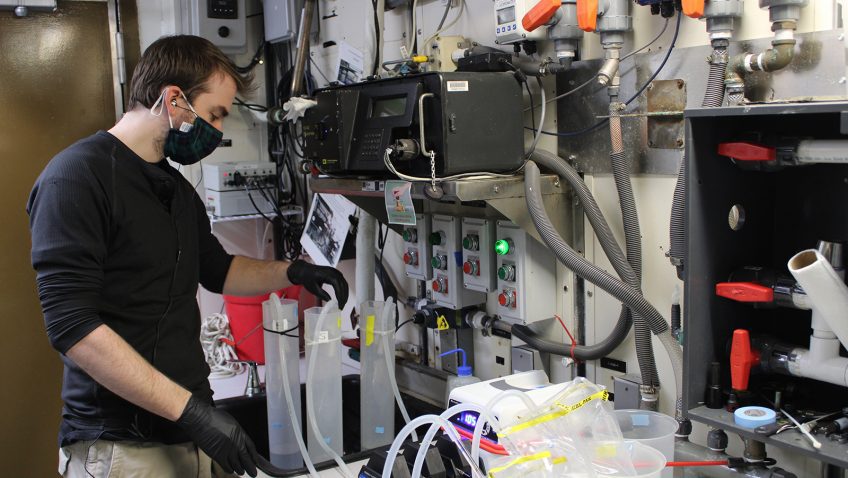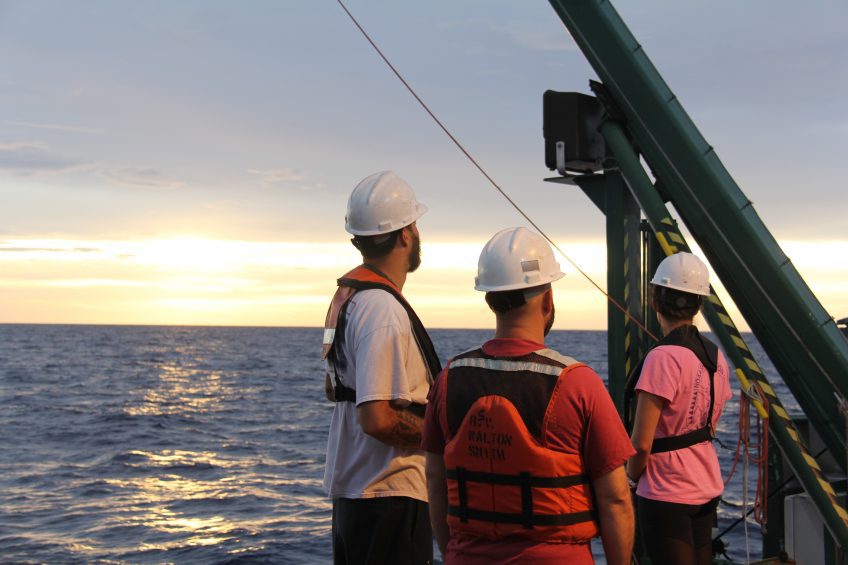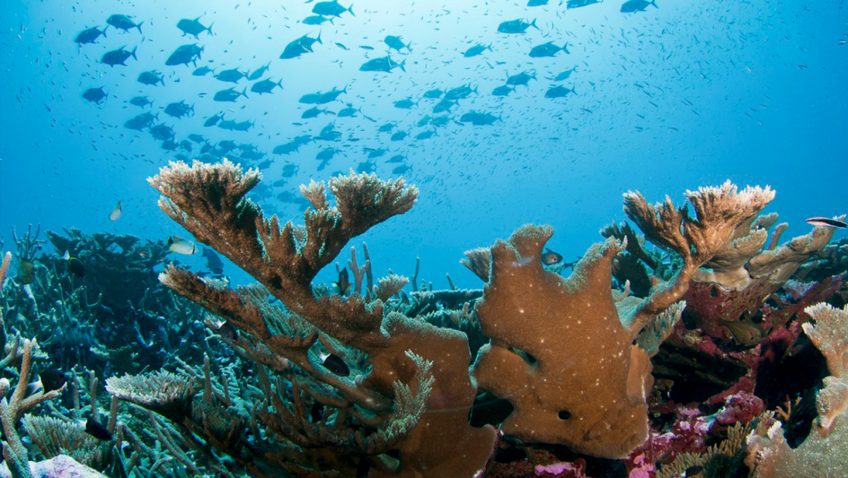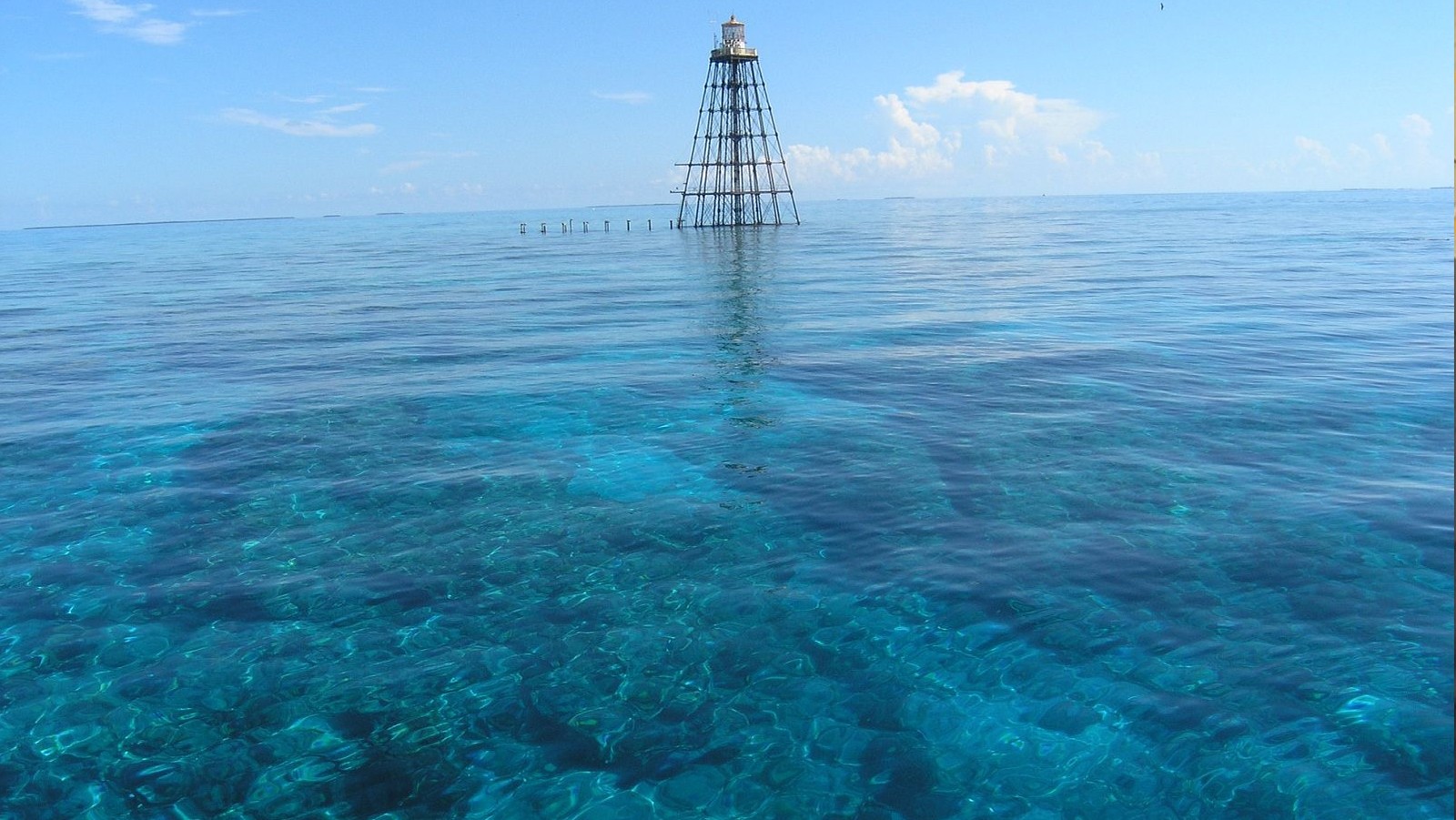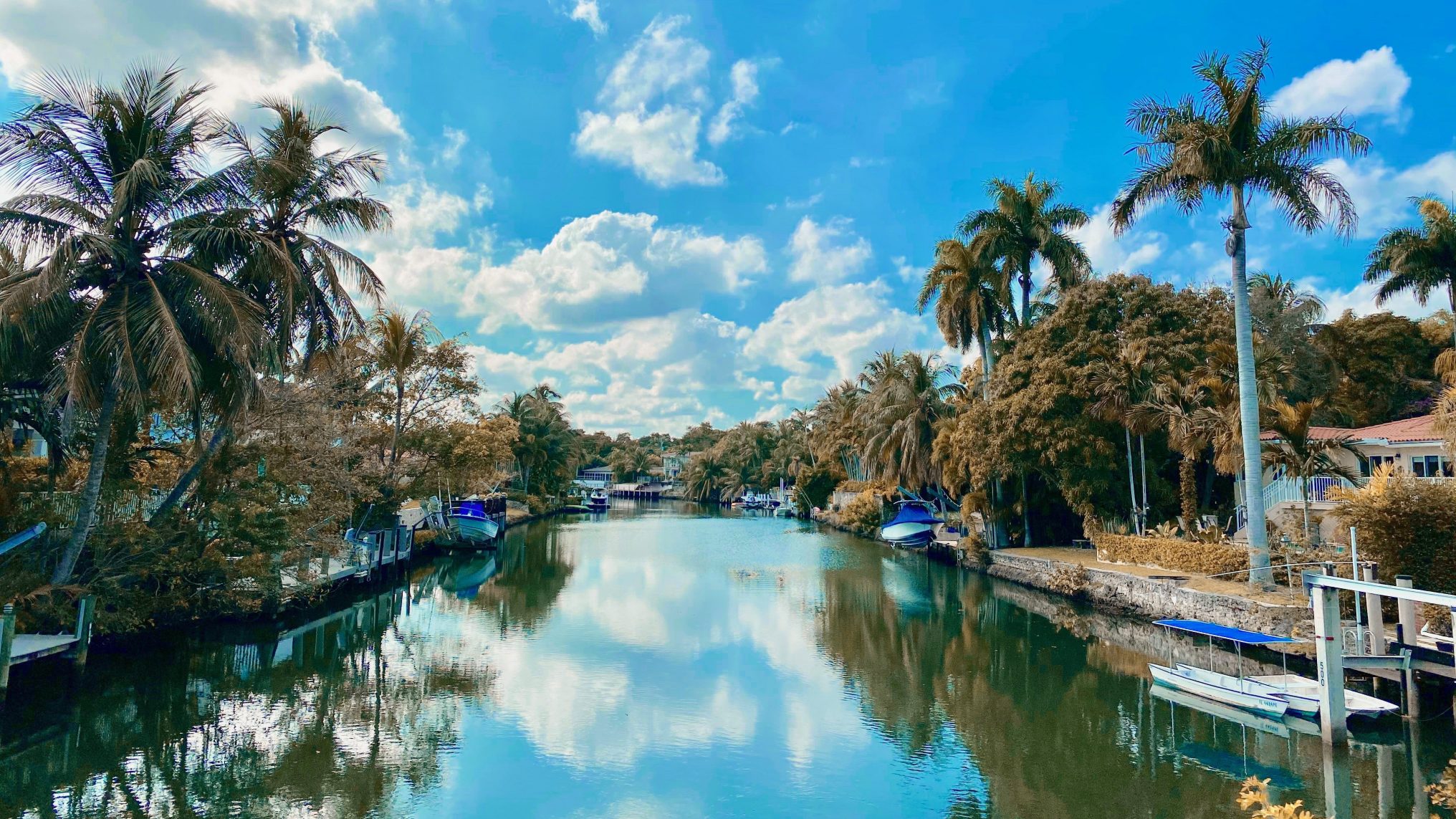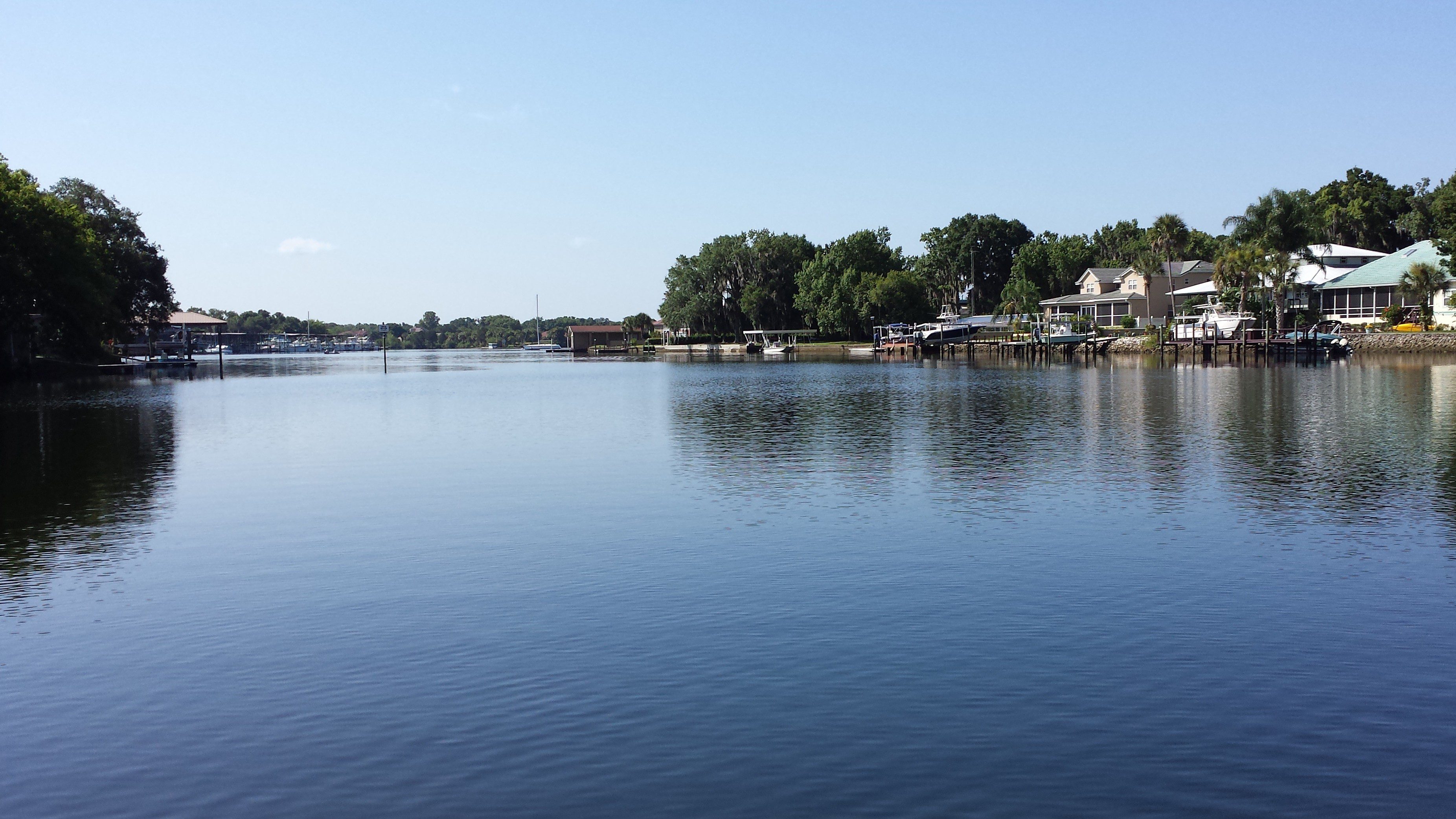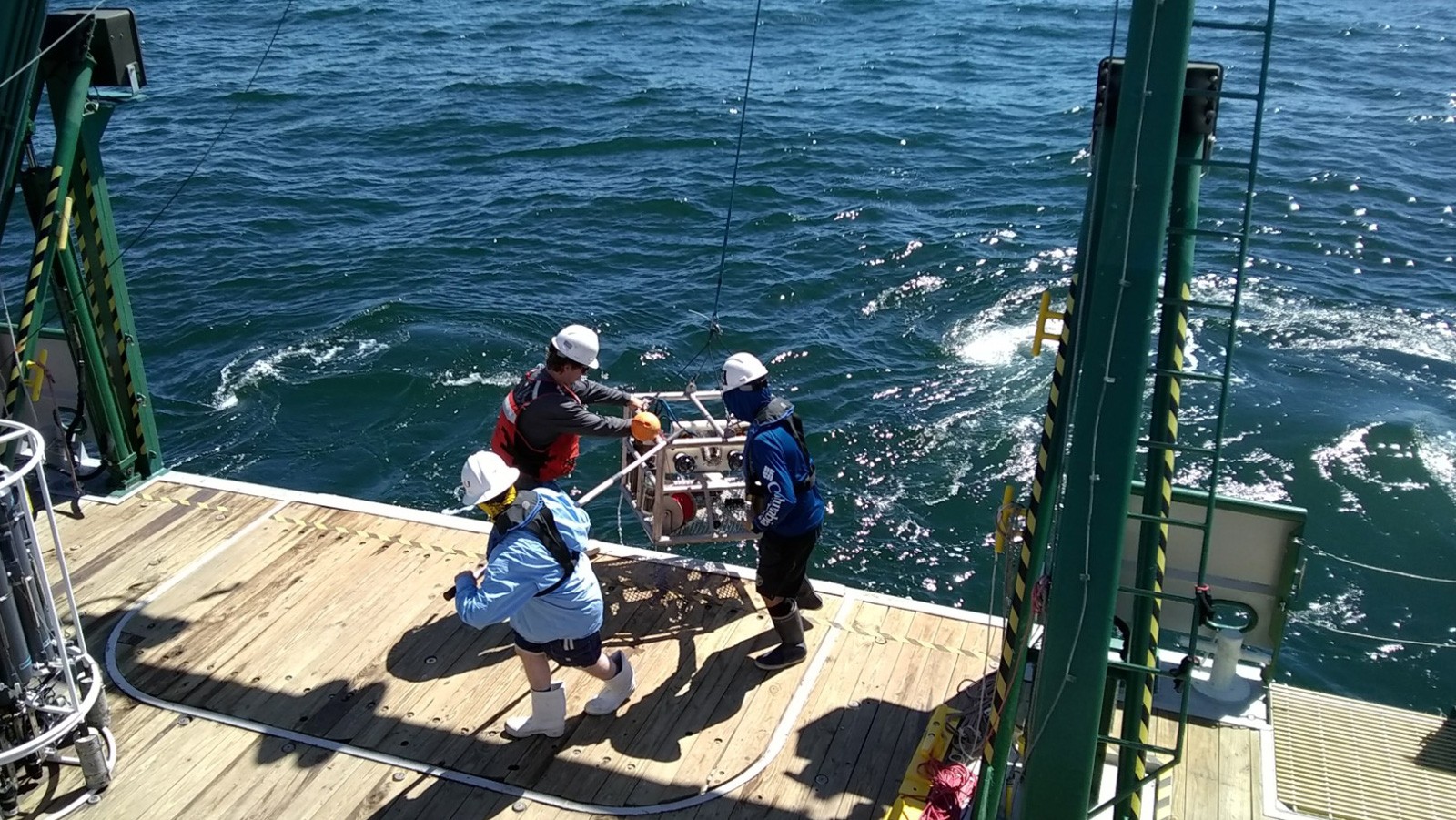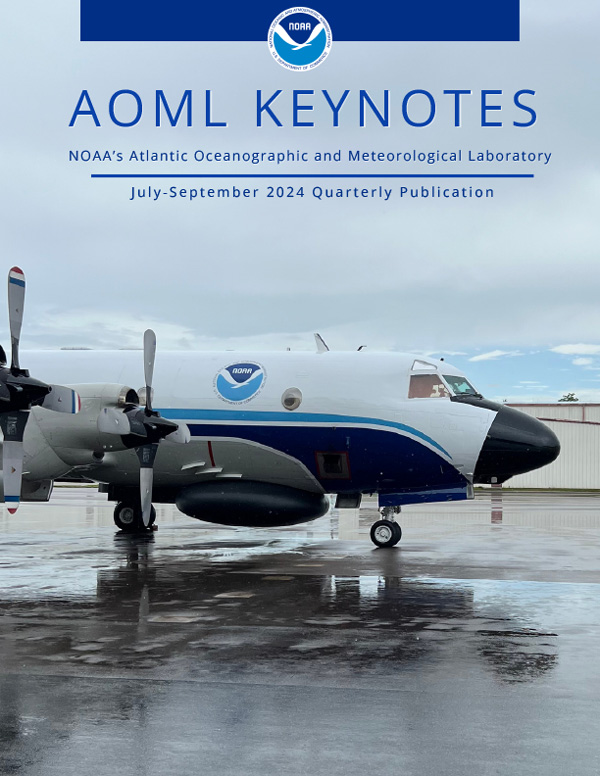Study Links Red Tide and Dead Zones off West Coast of Florida
This article is adapted from an article originally published by the University of Miami Red tides caused by the algae Karenia brevis have become a near annual occurrence along the west coast of Florida, causing widespread ecological and economic harm. A new study analyzed 16 years of oceanographic data from across the West Florida Shelf […]
Bringing New Technologies to Fisheries Surveys with the Northern Gulf Institute
From March to May, NGI Postdoctoral Associate Sean Anderson is taking part in two legs of a NOAA Fisheries survey in the Gulf of America on board NOAA Ship Pisces. The NOAA project, “Environmental DNA Enhancement of Fisheries Independent Monitoring Cruises for Ecosystem Based Fisheries Management”, seeks to improve ecosystem-based fisheries management (EBFM) with the use of environmental DNA (eDNA) sequencing. Camera traps (pictured) placed at the seafloor in the Gulf of America capture video of passing fish, while bottles collect seawater that the fish have passed through, leaving behind DNA traces.
NOAA Celebrates 10 Years of Integrated Ecosystem Assessments
Over the past 10 years, scientists from all over the world and in the United States have achieved incremental successes in using the Integrated Ecosystem Assessment approach. This approach allows them to build relationships with scientists, stakeholders, and managers and balance the needs of nature and society for current and future generations.
Increasing Red Tide Sampling off the West Florida Shelf
Scientists are heading to sea on the R/V Walton Smith to sample areas where red tide blooms are commonly present off the west Florida coast. Karenia brevis, the organism that causes red tide, forms blooms when elevated concentrations (>100,000 cells per liter) are present in the water. K. brevis produces toxins called brevetoxins that can cause massive fish kills, weaken or kill marine mammals, and (if the toxin becomes aerosolized and inhaled) cause respiratory distress in humans and marine mammals. The team of scientists will be comprehensively sampling a series of transects along the West Florida Shelf.
NOAA’s New National Marine Ecosystem Status Web Tool
NOAA launched a new National Marine Ecosystem Status web tool, on Monday October 19. This tool shows the status of marine ecosystems across the U.S. It provides easy access to NOAA’s wide range of essential coastal and marine ecosystem data in one location for the first time.
Florida Keys Integrated Assessment Team Launches New Ecosystem Status Report Web Tool
The Florida Keys Integrated Assessment (IEA) team, led by AOML in partnership with managers and scientists from the Office of National Marine Sanctuaries, launched a new Ecosystem Status Report web tool on May 13th. The IEA approach aims to balance the needs of nature and society through Ecosystem-Based Management. It provides scientific knowledge of the Florida Keys National Marine Sanctuary ecosystem to scientists, policy makers and resource managers.
Nutrients Entering Biscayne Bay: Tracking the Source with New Technology
AOML scientists are collaborating with partners from the Northern Gulf Institute of the University of Mississippi, and the University of Miami’s Cooperative Institute for Marine and Atmospheric Studies to tackle increasing nutrient levels throughout Biscayne Bay. A previous study detected the slow but steady eutrophication and warned of a regime shift towards murky algal dominated waters if better water quality management practices were not implemented.
Study shows nutrients entering Biscayne Bay
An analysis of 20 years of water quality data shows that Biscayne Bay, a NOAA Habitat Focus Area off southeast Florida, is degrading, as scientists have identified early warning signs that could help inform managers to prevent a regime shift of the bay’s ecosystem.In a recent study published in Estuaries and Coasts, scientists from NOAA and partner organizations detected an increasing trend in chlorophyll and nutrient levels from 48 monitoring stations throughout Biscayne Bay.
New Cruise Studies Red Tide Impacts in South Florida
AOML recently led a multi-agency (NOAA/AOML, NOAA/SEFSC, State of Florida Fish and Wildlife Research Institute, Florida Fish and Wildlife Commission, NOAA/NESDIS, University of South Florida, MOTE Marine Laboratory and Aquarium, and University of Miami) research cruise to study the effects of Southwest Florida’s ongoing red tide. To address such a complex problem as red tide, the cruise brought together a diverse team of experts consisting of commercial fishermen, oceanographers, systems ecologist, phytoplankton ecologist, and fish population biologist. This cruise allowed researchers to take a holistic approach to characterize the extent of the red tide and its impacts. The goal of the cruise was to understand why these blooms happen to better inform effective future response measures and hopefully improve Florida’s resilience to these coastal events.


